-
 Bitcoin
Bitcoin $86,583.4721
2.16% -
 Ethereum
Ethereum $1,895.5281
-0.85% -
 Tether USDt
Tether USDt $1.0001
0.02% -
 XRP
XRP $2.1445
-0.75% -
 BNB
BNB $606.2368
-1.73% -
 Solana
Solana $129.0211
0.29% -
 USDC
USDC $1.0001
0.01% -
 Dogecoin
Dogecoin $0.1741
0.48% -
 Cardano
Cardano $0.6906
0.32% -
 TRON
TRON $0.2378
0.95% -
 Toncoin
Toncoin $4.0603
-0.37% -
 Chainlink
Chainlink $13.9750
-1.85% -
 UNUS SED LEO
UNUS SED LEO $9.3633
0.25% -
 Stellar
Stellar $0.2715
-1.36% -
 Avalanche
Avalanche $19.5219
-1.19% -
 Sui
Sui $2.4731
-0.43% -
 Shiba Inu
Shiba Inu $0.0...01260
-2.95% -
 Hedera
Hedera $0.1706
-1.92% -
 Polkadot
Polkadot $4.1559
-2.29% -
 Litecoin
Litecoin $84.3085
-1.31% -
 Bitcoin Cash
Bitcoin Cash $309.2588
-1.90% -
 MANTRA
MANTRA $6.3164
-0.47% -
 Bitget Token
Bitget Token $4.6190
-0.40% -
 Dai
Dai $0.9998
-0.03% -
 Ethena USDe
Ethena USDe $0.9999
-0.02% -
 Hyperliquid
Hyperliquid $14.0049
2.30% -
 Pi
Pi $0.6789
-4.89% -
 Monero
Monero $219.7111
0.98% -
 Uniswap
Uniswap $6.1866
-1.34% -
 Aptos
Aptos $5.3747
-1.07%
How to optimize mining performance through BIOS settings?
Optimizing BIOS settings like PCIe speed, memory clock, and voltage can boost mining performance, but incorrect adjustments risk hardware damage; always monitor and proceed cautiously.
Mar 30, 2025 at 12:28 am

Understanding the BIOS and its Role in Mining
The BIOS (Basic Input/Output System) is the firmware that initializes your computer hardware before the operating system loads. For cryptocurrency mining, optimizing BIOS settings can significantly impact your mining rig's performance and efficiency. This involves tweaking parameters that directly affect the hardware's capabilities, primarily the GPU (Graphics Processing Unit). Incorrect settings can lead to instability or even damage, so proceed with caution and understand the implications of each change. Always back up your BIOS settings before making any adjustments.
Accessing and Navigating the BIOS
Accessing your BIOS typically involves restarting your computer and pressing a specific key (Delete, F2, F10, F12, etc.) repeatedly during the boot process. The exact key varies depending on your motherboard manufacturer. Once inside, you'll navigate using the arrow keys and Enter key to select options. The interface might appear complex, but the relevant settings are usually grouped under headings like "Advanced," "AI Tweaker," or "Power." Familiarize yourself with your motherboard's manual for precise navigation.
Key BIOS Settings for Mining Optimization
Several BIOS settings can significantly affect your mining performance. These settings control various aspects of your hardware, including power delivery, memory timings, and voltage.
PCIe Settings: Adjusting PCIe settings can improve data transfer speeds between your GPU and the motherboard. Look for options like PCIe speed (Gen 3 vs. Gen 4) and PCIe bandwidth. Enabling PCIe Gen 4 (if supported by your hardware) can significantly boost performance, but ensure your components are compatible.
Memory Settings: Your GPU's memory speed and timings directly impact hashing power. Increasing the memory clock speed can lead to higher hash rates, but this also increases power consumption and heat generation. Experiment cautiously and monitor temperatures. Adjusting memory timings (like CAS latency) can also provide small performance gains.
Voltage Settings: Increasing the voltage supplied to your GPU can enhance stability at higher clock speeds. However, excessive voltage can generate excessive heat and potentially damage your hardware. Proceed with extreme caution and monitor temperatures closely. Start with small increments and test for stability.
Power Settings: BIOS often allows adjusting the power limits of your GPU. Increasing the power limit allows the GPU to draw more power, leading to higher clock speeds and hash rates, but again, this increases heat and power consumption. Balance performance gains with thermal limits.
Fan Control: While not directly a BIOS setting, many BIOS interfaces allow you to configure fan curves. Setting aggressive fan curves will ensure adequate cooling, preventing thermal throttling and maintaining stability at higher clock speeds.
Monitoring and Adjusting for Optimal Performance
After making changes to your BIOS settings, it’s crucial to monitor your mining rig's performance and stability. Use monitoring software (like MSI Afterburner or HWInfo) to track GPU temperatures, clock speeds, and hash rates. If you encounter instability (crashes, errors), you'll need to revert some settings or reduce the overclock. The optimal settings will depend on your specific hardware and cooling solution.
Risks and Precautions
Modifying BIOS settings carries risks. Incorrect settings can lead to system instability, hardware damage, or even complete system failure. Always proceed with caution and understand the implications of each change. Before making any adjustments, back up your current BIOS settings. If you're unsure about any setting, it's best to leave it at its default value. Consider consulting online resources and forums specific to your motherboard and GPU model.
Frequently Asked Questions
Q: Can I damage my hardware by incorrectly adjusting BIOS settings?
A: Yes, incorrectly adjusting BIOS settings, particularly voltage and power limits, can lead to overheating, component damage, or even complete system failure. Always proceed cautiously and monitor your hardware closely.
Q: What software should I use to monitor my mining rig's performance after adjusting BIOS settings?
A: Popular options include MSI Afterburner, HWInfo64, and similar monitoring tools. These provide real-time data on GPU temperatures, clock speeds, and hash rates, allowing you to fine-tune your settings and ensure stability.
Q: My BIOS doesn't have all the settings mentioned. What should I do?
A: The availability of specific BIOS settings varies depending on your motherboard and its firmware version. If your BIOS lacks certain options, you might need to update your BIOS (check your motherboard manufacturer's website for updates) or consider alternative methods of overclocking using software.
Q: How often should I check my mining rig's temperatures after making BIOS changes?
A: It's crucial to monitor temperatures continuously, especially immediately after making changes. Regularly check temperatures throughout mining operations, ideally every few hours, to ensure they remain within safe operating ranges for your hardware.
Q: What happens if my system becomes unstable after changing BIOS settings?
A: System instability can manifest as crashes, errors, or reduced performance. If this occurs, you'll need to enter the BIOS again and revert the changes you made, or adjust them incrementally to find a stable configuration. In some cases, a CMOS reset might be necessary.
Q: Is it necessary to adjust BIOS settings for mining?
A: While not strictly necessary, adjusting BIOS settings can potentially improve mining performance by allowing for higher clock speeds and power draw. However, this requires careful monitoring and understanding of the risks involved. Many miners achieve satisfactory results without BIOS modifications.
Q: Are there any risks associated with updating the BIOS?
A: Yes, updating the BIOS is a risky procedure. A failed update can render your motherboard unusable. Always follow the manufacturer's instructions carefully and only update if absolutely necessary. Consider backing up your BIOS settings before attempting an update.
Disclaimer:info@kdj.com
The information provided is not trading advice. kdj.com does not assume any responsibility for any investments made based on the information provided in this article. Cryptocurrencies are highly volatile and it is highly recommended that you invest with caution after thorough research!
If you believe that the content used on this website infringes your copyright, please contact us immediately (info@kdj.com) and we will delete it promptly.
- The broader crypto market witnessed a rebound today
- 2025-04-02 23:55:12
- 3 Oaks Gaming Enters the UK iGaming Market Through a New Partnership with BVGroup
- 2025-04-02 23:55:12
- XRP Price Has Continued To Stay In The Red, Consolidating In The $2.10 Range Over The Past Few Days
- 2025-04-02 23:50:12
- Is Kaspa (KAS) Still Worth Holding in 2025 Despite Prolonged Struggles?
- 2025-04-02 23:50:12
- Circle Labs Inc. (USDC) IPO Filing Sheds Light on Its Relationship with Coinbase
- 2025-04-02 23:45:12
- Seamless Migrates Its Entire Infrastructure to Morpho Labs
- 2025-04-02 23:45:12
Related knowledge

What is DeFi mining and how is it different from traditional mining?
Apr 02,2025 at 09:50am
DeFi mining, also known as yield farming or liquidity mining, is a process within the decentralized finance (DeFi) ecosystem where users provide liquidity to decentralized platforms in exchange for rewards. Unlike traditional mining, which involves solving complex mathematical problems to validate transactions and add them to a blockchain, DeFi mining f...
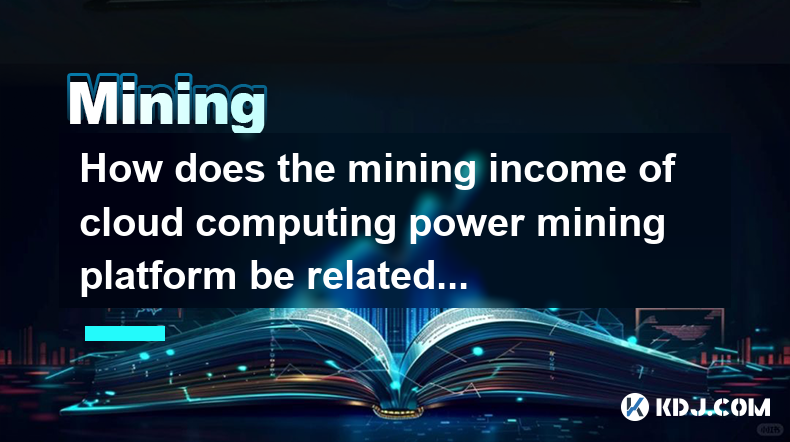
How does the mining income of cloud computing power mining platform be related to mining pool allocation?
Apr 02,2025 at 01:56am
The relationship between the mining income of a cloud computing power mining platform and the allocation of mining pools is a crucial aspect of cryptocurrency mining. Mining income is influenced by various factors such as the efficiency of the mining hardware, electricity costs, and the specific cryptocurrency being mined. However, the allocation of min...
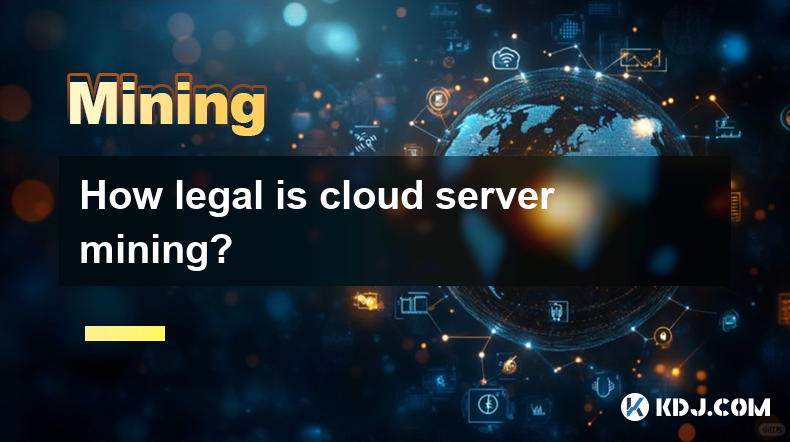
How legal is cloud server mining?
Apr 01,2025 at 08:08am
Cloud server mining has become an increasingly popular method for individuals and companies to participate in cryptocurrency mining without the need for expensive hardware and high electricity costs. However, the legality of cloud server mining can be a complex issue, as it varies by jurisdiction and depends on several factors. This article will explore...
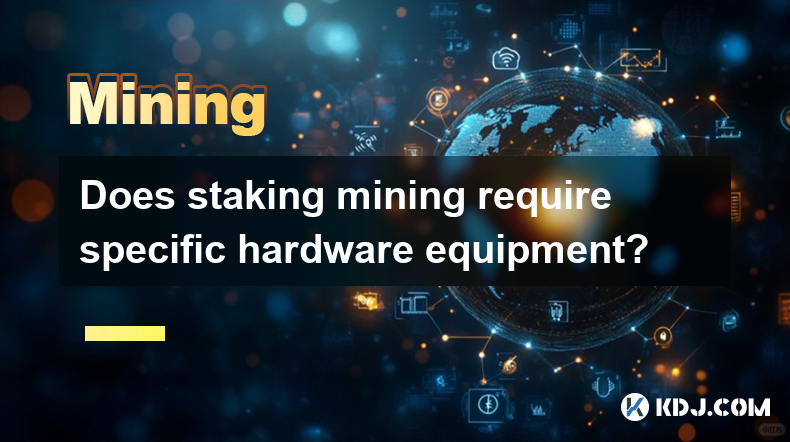
Does staking mining require specific hardware equipment?
Apr 02,2025 at 08:21am
Staking mining, often referred to simply as staking, is a process used by various cryptocurrencies to secure their networks and validate transactions. Unlike traditional mining, which often requires specialized hardware like ASICs (Application-Specific Integrated Circuits) or high-performance GPUs (Graphics Processing Units), staking typically does not ...
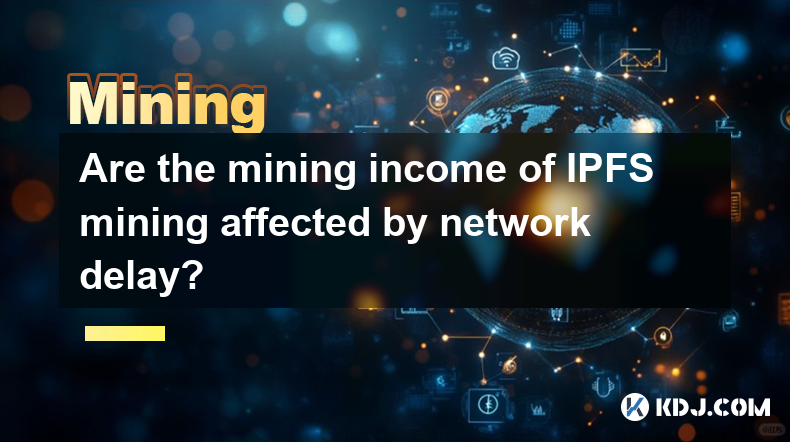
Are the mining income of IPFS mining affected by network delay?
Apr 01,2025 at 09:36pm
Are the Mining Incomes of IPFS Mining Affected by Network Delay? Understanding IPFS Mining and Network Delay's ImpactIPFS (InterPlanetary File System) mining, unlike Bitcoin mining, doesn't involve solving complex cryptographic puzzles. Instead, it focuses on providing storage and bandwidth to the network. Miners earn rewards for storing and sharing dat...
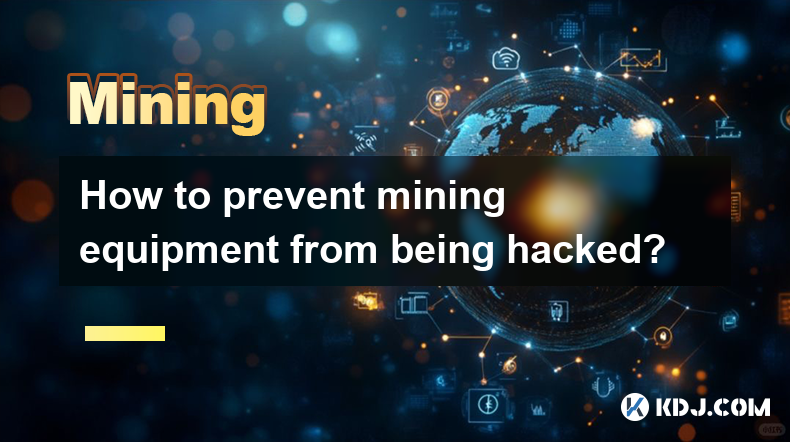
How to prevent mining equipment from being hacked?
Apr 01,2025 at 06:22am
Understanding the ThreatsCryptocurrency mining, while potentially lucrative, exposes your equipment to various cyber threats. These threats range from simple malware infections that steal your mining profits to sophisticated attacks that hijack your entire operation. Understanding these threats is the first step in effective protection. This includes r...

What is DeFi mining and how is it different from traditional mining?
Apr 02,2025 at 09:50am
DeFi mining, also known as yield farming or liquidity mining, is a process within the decentralized finance (DeFi) ecosystem where users provide liquidity to decentralized platforms in exchange for rewards. Unlike traditional mining, which involves solving complex mathematical problems to validate transactions and add them to a blockchain, DeFi mining f...

How does the mining income of cloud computing power mining platform be related to mining pool allocation?
Apr 02,2025 at 01:56am
The relationship between the mining income of a cloud computing power mining platform and the allocation of mining pools is a crucial aspect of cryptocurrency mining. Mining income is influenced by various factors such as the efficiency of the mining hardware, electricity costs, and the specific cryptocurrency being mined. However, the allocation of min...

How legal is cloud server mining?
Apr 01,2025 at 08:08am
Cloud server mining has become an increasingly popular method for individuals and companies to participate in cryptocurrency mining without the need for expensive hardware and high electricity costs. However, the legality of cloud server mining can be a complex issue, as it varies by jurisdiction and depends on several factors. This article will explore...

Does staking mining require specific hardware equipment?
Apr 02,2025 at 08:21am
Staking mining, often referred to simply as staking, is a process used by various cryptocurrencies to secure their networks and validate transactions. Unlike traditional mining, which often requires specialized hardware like ASICs (Application-Specific Integrated Circuits) or high-performance GPUs (Graphics Processing Units), staking typically does not ...

Are the mining income of IPFS mining affected by network delay?
Apr 01,2025 at 09:36pm
Are the Mining Incomes of IPFS Mining Affected by Network Delay? Understanding IPFS Mining and Network Delay's ImpactIPFS (InterPlanetary File System) mining, unlike Bitcoin mining, doesn't involve solving complex cryptographic puzzles. Instead, it focuses on providing storage and bandwidth to the network. Miners earn rewards for storing and sharing dat...

How to prevent mining equipment from being hacked?
Apr 01,2025 at 06:22am
Understanding the ThreatsCryptocurrency mining, while potentially lucrative, exposes your equipment to various cyber threats. These threats range from simple malware infections that steal your mining profits to sophisticated attacks that hijack your entire operation. Understanding these threats is the first step in effective protection. This includes r...
See all articles

























































































